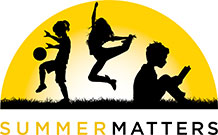Supporting the Summer Learning Strategy to Boost Student Achievement
Research indicates that summer learning can be an effective approach to closing opportunity gaps for students from low-income families. Many county offices of education and school districts offer summer learning as part of a complete educational strategy: two-thirds (66%) percent of respondents to a 2013 CSBA survey reported offering some type of summer learning program.
This fact sheet provides school board members with information that can help them determine if summer learning is a strategy that could be implemented in their counties or districts. The fact sheet offers a brief description of the summer learning model, an exploration of research supporting the need for students to engage in summer learning as well as of the positive effects of summer learning programs, examples of potential sources of funding for summer learning, considerations for school board members as they explore implementing summer learning, and links to additional resources on all of the above. CSBA’s Summer Learning Guide provides a more complete picture of summer learning and all of the topics discussed in this fact sheet.
The summer learning model
Summer is often a time of learning loss, particularly for low-income students. Providing these students more opportunities for learning during the summer months is one of the most effective ways to avoid learning loss and enhance students’ progress. However, not all extra time is created equal: programs that include a broad range of hands-on, problem- and project-based activities through summer enrichment experiences (similar to those available to children from higher income families who can pay for them) have been shown to be particularly effective. The summer learning model focuses on these kinds of activities and experiences that motivate and engage young people.
Financing summer learning
While the cost of summer learning varies from place to place, county offices of education and districts that operate summer learning programs report that these programs are cost effective, in part because they marshal resources from the larger community and from a range of funding sources. Much of the variation in cost for summer learning is due to the mix of certificated and classified staff members employed by the county or district and to the contribution of resources from outside agencies and partners. There is no singular avenue of support for summer learning: successful programs braid together multiple revenue sources, including funds from the Local Control Funding Formula. While securing funding for summer learning requires planning, persistence, and creativity, many counties and districts have shown that it is possible—and the research shows that it is an effective investment in student learning.
Recent research
The RAND Corporation has launched a five-year study to investigate the effect of summer learning programs in five states. The study follows a group of third-grade students enrolled in public school as of the spring 2013. The researchers used “a randomized controlled trial to assess the effects of large-scale, voluntary, district-run, summer learning programs serving low-income elementary students.” Given the large scope and rigorous methodology of the RAND team, their findings are particularly helpful to those looking to increase the effectiveness of summer learning in California. RAND released early results from the study in 2014. Some of the most positive findings in support of summer learning were:
- Communities want summer learning: The researchers found a high demand for free, voluntary programs that combine academics and enrichment. Districts were not able to serve all the students who applied and of those who were denied admission, 60% reported not attending any kind of summer program or camp over the summer.
- Attendance matters: Increased attendance in summer learning programs was strongly associated with higher math achievement as measured by standardized tests. While third-graders’ reading achievement was not found to increase as significantly as in math, the data trended upwards.
- Instructional quality and instructor grade-level experience helps reading achievement: The researchers’ analysis found that reading instruction was more sensitive to instructional quality than math and that third-grade summer learning students who had a teacher who had taught third or fourth grade the prior year performed better in reading.
Implications for boards
It is a board’s responsibility to set the guiding vision for the county office of education or school district. This vision should reflect the needs and wishes of the community. By asking the right questions, board members can bring attention to the issue of summer learning and offer insight into how best to create partnerships and use resources to support programs.
- Boards should ask questions about the prospective scope and approach for summer programs. The RAND study suggested that there is likely to be more demand than supply for free, voluntary programs. Therefore, considering the students who would benefit most from summer learning and the resources needed to serve these students are important areas for boards to address. As community leaders, board members can be key to identifying potential partners and creating collaborations—for example, with the city parks and recreation department or a local foundation.
- The RAND finding that attendance is an important indicator of student achievement is consistent with research on attendance during the regular school year. By communicating the value of summer learning and its potential for improving student outcomes, boards might help to create a culture in which students regularly attend, not only because they are motivated by the summer learning enrichment approach, but also because their parents understand the value of summer learning opportunities.
- Boards can make year-round investments in summer learning by supporting and funding teacher and staff professional development that can benefit student learning during the regular school year and carry over into summer.
Quality summer learning opportunities occur when they are supported by visionary, knowledgeable leaders, including board members and superintendents, committed to continuous improvement and securing the resources needed to deliver the learning experiences students need.




